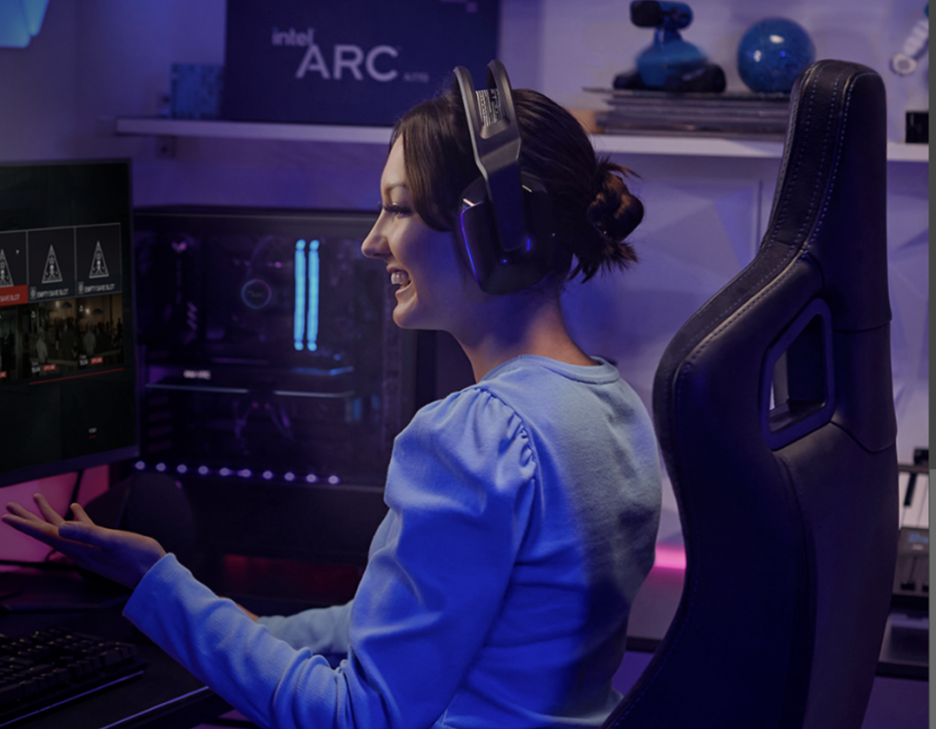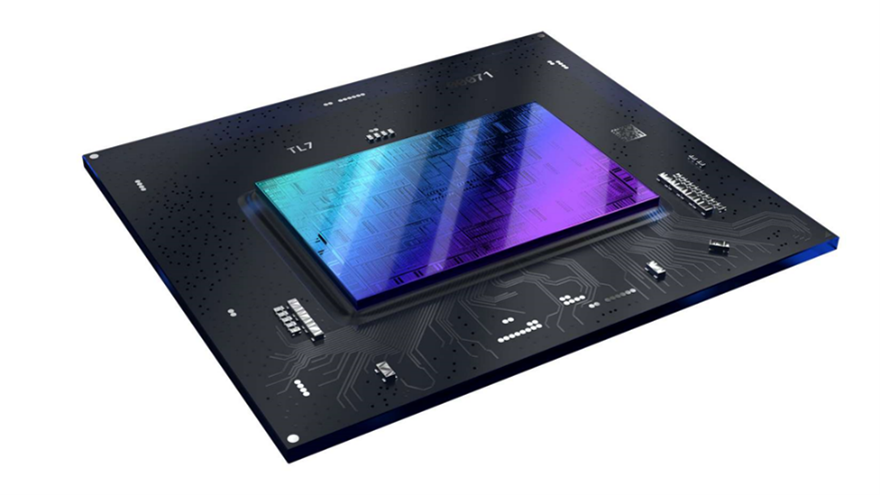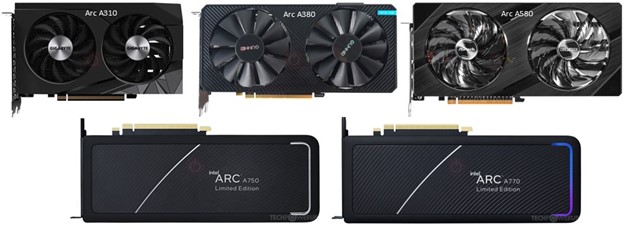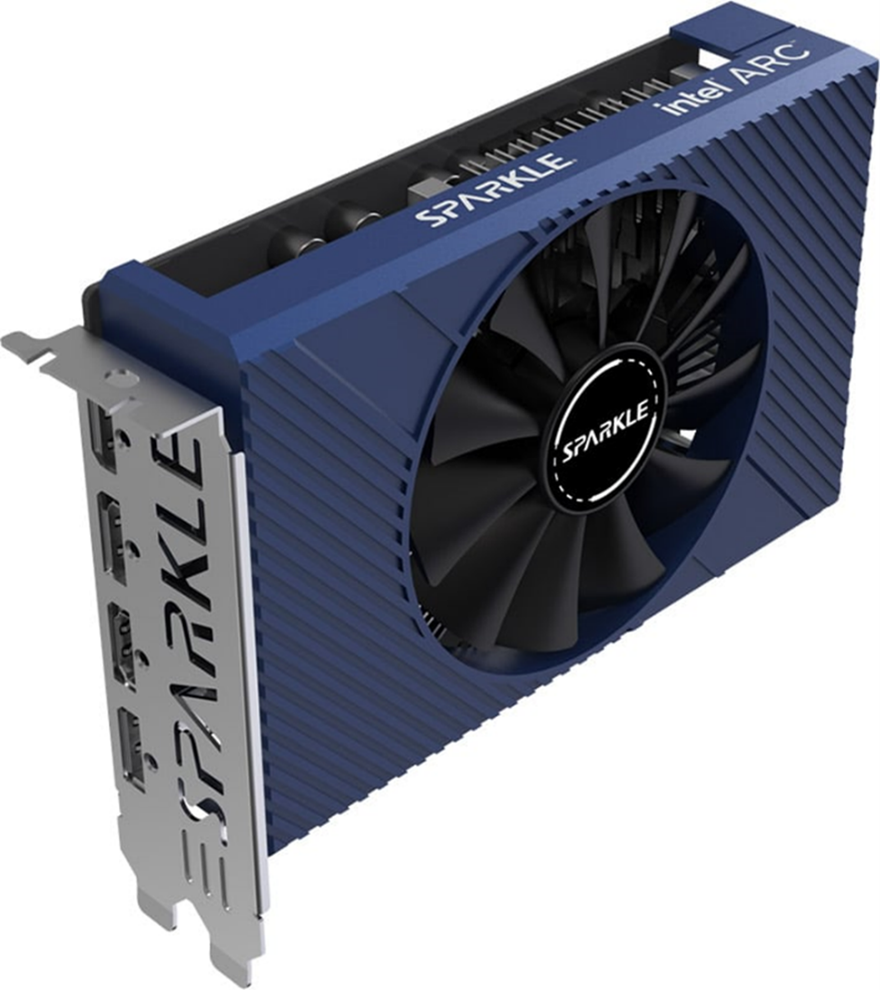Intel has unveiled its Arc A580 desktop graphics AIB through its partners. Rumors had swirled about this GPU and the associated AIBs for a few weeks prior. Positioned in the middle of the Intel Arc discrete graphics lineup, this product targets gamers and creators, offering gaming performance at 1080p with high settings on contemporary games, and claims Intel, offers high frame rates for esports titles, and a wide range of media capabilities. The Arc A580 comes with AI-powered Xe Super Sampling (XeSS) and hardware-based ray tracing support.

What do we think? Normally, new products are announced in the spring and shipped to the channel in the fall, with early sightings usually in June at Computex. Intel hadn’t released any news about new commercial GPUs in over a year. Battlemage was to be the next generation. Unlike the leaky dribble of information about the Alchemist line, there is complete silence on Battlemage. That’s probably a good policy if the product is still in the pipeline, however, the company should make some mention of it so it doesn’t look like a shutdown. Such rumors have heightened since the departure of Intel’s main GPU mouthpiece.
The Arc A580 is an entry/mid-range graphics card that Intel announced, but never launched, now it seems to have done so. This is a real surprise considering the Arc A580 was revealed well over a year ago by Intel, and hasn’t been mentioned since. It is based on the DG2-512 graphics processor in its ACM-G10 version. Intel has disabled some shading units on the Arc A580 to meet the product’s shader count target.

The Xe Matrix Extensions (XMX) AI engines are used for Intel’s XeSS, an AI-based upscaling technology, and Intel says they can be employed for other general purpose generative AI tasks as well.
The GGDR6 is run at 1700MHz over 256-bit, giving it an effective speed of 16Gbps and a memory bandwidth of 512Gbps. They manage to do that and run the GPU at 1700MHz and only draw 185W. The GPU also has dual H.265 (HEVC) hardware-accelerated as well as AV1 decode and encode engines, and VP9 decoding.
The max resolution (HDMI) is 4096×2160@60Hz. And overall max resolution (DP) is 7680×4320@60Hz.
Intel Arc A580-based add-in cards are available from ASRock, GUNNIR, and Sparkle at price starting from $179.

In contrast, the Arc A310, introduced as a mid-range OEM-only graphics board in June 2022, has seen a retail version by partner Sparkle priced at $110, making it the most budget-friendly option among current-generation GPUs. While performance specifics are limited, it shares similarities with the A380 and offers AV1 encoding support, potentially proving efficient for basic content creation and display output tasks.
The Intel Arc A310 was introduced as a mid-range OEM-only graphics board on June 14, 2022. It is based on the DG2-128 GPU as an ACM-G11 variant. Sparkle, an Intel GPU partner, recently launched a retail version. Priced at $110, it currently holds the distinction of being the most affordable AIB of the current generation, surpassing the A380, which typically retails between $120 and $140.
| A310 | A380 | A580 | A750 | A770 | |
| Shaders | 768 | 1,024 | 3,072 | 3,584 | 4,096 |
| Tensor cores | 96 | 128 | 384 | 448 | 512 |
| TMUs | 32 | 64 | 192 | 224 | 256 |
| ROPS | 16 | 32 | 96 | 112 | 128 |
| RT cores | 6 | 8 | 24 | 28 | 32 |
| Transistors (m) | 7,200 | 7,200 | 21,700 | 21,700 | 21,700 |
| Process (nm) | 6 | 6 | 6 | 6 | 6 |
| GPU clock (MHz) | 2,000 | 2,000 | 1,700 | 2,050 | 2,100 |
| Memory bus (bits) | 64 | 96 | 256 | 256 | 256 |
| Memory clock (MHz) | 1,937 | 1,937 | 2,000 | 2,000 | 2,000 |
| GDDR6 (GB) | 4 | 6 | 8 | 8 | 16 |
| Price | $110 | $130 | $179 | $220 | $320 |
Intel and its partners’ AIB offerings.
As for its performance, it’s challenging to provide a definitive answer since there are no reviews or comprehensive community benchmarks available for this GPU. However, the A310 shares the same GPI as the A380 but with six Xe cores instead of eight. As a rough estimate, we can assume it will deliver approximately 75% of the A380’s performance at the same clock speed, depending on the specific workload, of course. Both Sparkle’s A310 and A380 variants operate at 2,000MHz, although ASRock offers an A380 model running at 2,250MHz.

On the positive side, the A310 doesn’t necessarily have to be evaluated solely on gaming performance. Some users may require a graphics card primarily for display output and basic content creation tasks, which the A310 handles without needing an additional power cable. It also comes equipped with AV1 encoding, similar to the A380, making it the most budget-friendly GPU with AV1 support. Additionally, the A310’s reduced design might even result in improved efficiency compared to the A380, although this remains speculative.